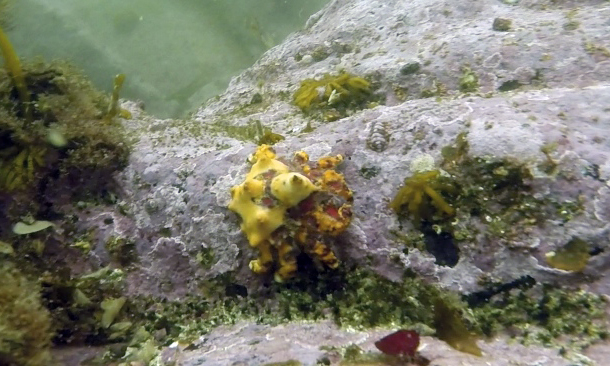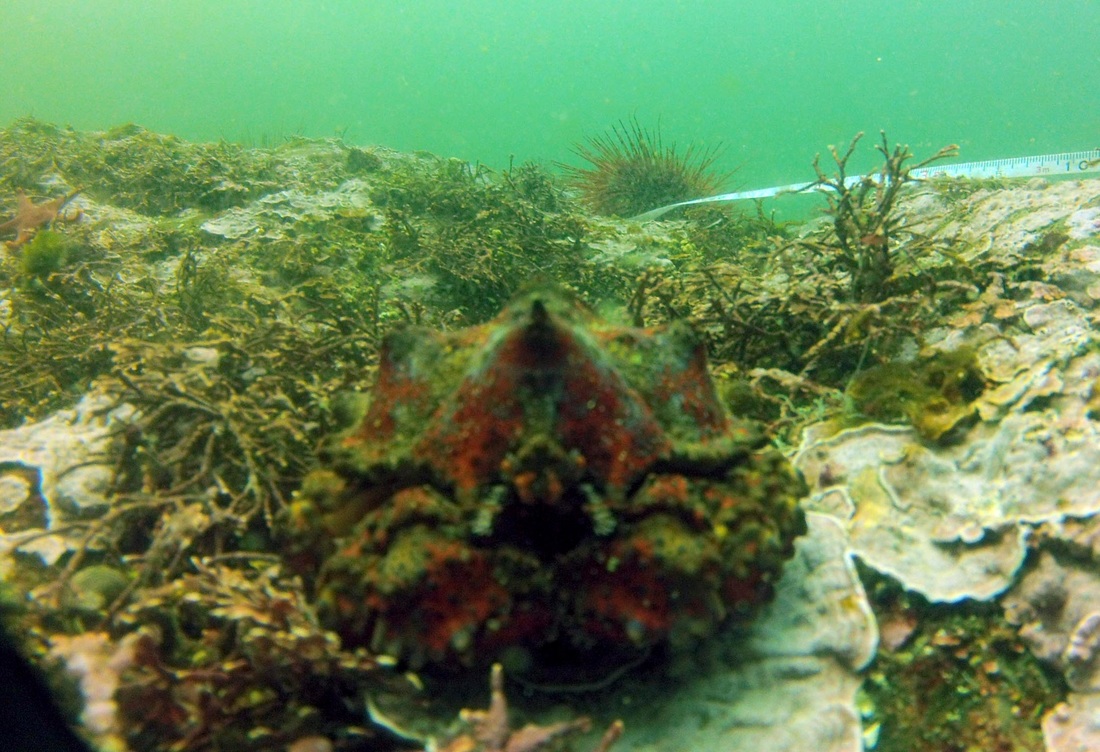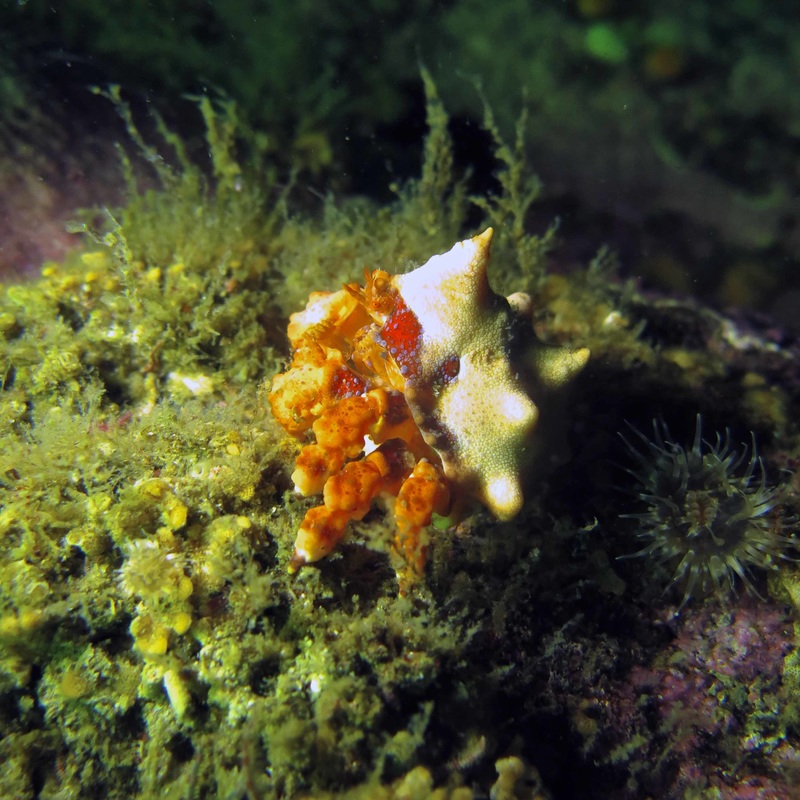Puget Sound king crab • Lopholithodes mandtii
Identification
The Puget Sound king crab is not difficult to recognize, with its ornate carapace structure and bright colouring. Its red body bears patches of bright yellow, orange, blue, and purple — as do its legs and claws — and it has a solid, boxy shape. Its carapace and appendages are studded with small bumps and taller cone-shaped projections. Juveniles start off even bumpier and bright reddish-orange. This large and solid crab, described by Lamb and Hanby as an "underwater mini army tank," can have a carapace measuring more than 30 cm across. See the E-Fauna species page for more photos.
Habitat & Range
The Puget Sound king crab, named for the inlet in northwestern Washington State, is found from Sitka, Alaska to Monterey, California. It inhabits rocky subtidal locations with strong currents, to 137 m deep. Beachcombers may occasionally find juveniles under rocks during unusually low tides. Adults are found in shallower waters while breeding in late winter and spring.
Similar Species
The brown box crab (Lopholithodes foraminatus) has a similar shape but is dull reddish-brown or tan in colour.
Intriguing Info
The Puget Sound king crab eats sea urchins, other echinoderms, and sea anemones.
The Puget Sound king crab is not difficult to recognize, with its ornate carapace structure and bright colouring. Its red body bears patches of bright yellow, orange, blue, and purple — as do its legs and claws — and it has a solid, boxy shape. Its carapace and appendages are studded with small bumps and taller cone-shaped projections. Juveniles start off even bumpier and bright reddish-orange. This large and solid crab, described by Lamb and Hanby as an "underwater mini army tank," can have a carapace measuring more than 30 cm across. See the E-Fauna species page for more photos.
Habitat & Range
The Puget Sound king crab, named for the inlet in northwestern Washington State, is found from Sitka, Alaska to Monterey, California. It inhabits rocky subtidal locations with strong currents, to 137 m deep. Beachcombers may occasionally find juveniles under rocks during unusually low tides. Adults are found in shallower waters while breeding in late winter and spring.
Similar Species
The brown box crab (Lopholithodes foraminatus) has a similar shape but is dull reddish-brown or tan in colour.
Intriguing Info
The Puget Sound king crab eats sea urchins, other echinoderms, and sea anemones.
References
Hart, J. Lopholithodes mandtii Brandt, 1849. In Klinkenberg, Brian. (Ed.) E-Fauna BC: Electronic Atlas of the Fauna of British Columbia. Lab for Advanced Spatial Analysis, Department of Geography, University of British Columbia, Vancouver. Accessed 28/09/2015.
Jensen, G.C. (1995). Pacific Coast Crabs and Shrimp. Monterey, CA: Sea Challengers. P. 72-73.
Lamb, A., and Hanby, B. (2005). Marine Life of the Pacific Northwest [electronic version]. Madeira Park, BC: Harbour Publishing.
Authors and editors of page
Kelly Fretwell and Brian Starzomski (2015).
Hart, J. Lopholithodes mandtii Brandt, 1849. In Klinkenberg, Brian. (Ed.) E-Fauna BC: Electronic Atlas of the Fauna of British Columbia. Lab for Advanced Spatial Analysis, Department of Geography, University of British Columbia, Vancouver. Accessed 28/09/2015.
Jensen, G.C. (1995). Pacific Coast Crabs and Shrimp. Monterey, CA: Sea Challengers. P. 72-73.
Lamb, A., and Hanby, B. (2005). Marine Life of the Pacific Northwest [electronic version]. Madeira Park, BC: Harbour Publishing.
Authors and editors of page
Kelly Fretwell and Brian Starzomski (2015).






